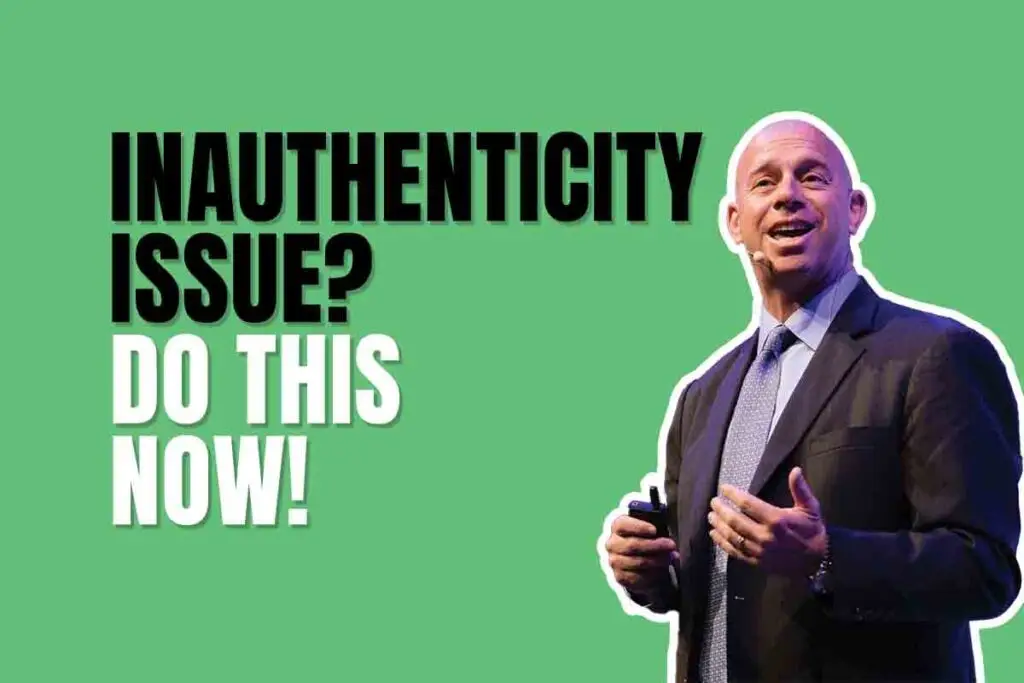Amazon Flagged Your Products as Inauthentic? Do This Now!

Why Did You Get an Amazon Inauthenticity Issue?
One day, you wake up and see the dreaded “Amazon inauthenticity problem” in your Amazon Seller Central. Panic sets in. Your best-selling product is flagged, sales are frozen, and you have no idea why. Sound familiar?
Dealing with an Amazon inauthenticity problem can be stressful. However, understanding why it happens is crucial. Even when your products are 100% genuine, Amazon may still flag them. If you don’t act fast, your account could be permanently suspended. Let’s explore why this occurs and how you can resolve it before it disrupts your business.
What Triggers an Amazon Inauthenticity Problem?
Amazon enforces strict policies to maintain customer trust. If they suspect a product isn’t genuine, they will take action. Several factors may contribute to an Amazon inauthenticity problem:
Customer Complaints – A buyer claims your product isn’t authentic, even if it is.
Low-Quality Supplier – Amazon may not recognize your supplier as a legitimate distributor.
High Return Rates – An excessive number of returns can raise red flags.
Poor Invoices – If Amazon requests invoices and they appear incomplete, your listing gets shut down.
Competitor Sabotage – Some sellers file false complaints to eliminate competition.
Step-by-Step Guide to Fix an Amazon Inauthenticity Problem
Step 1: Identify the Root Cause
To resolve an Amazon inauthenticity problem, start by reviewing the complaint. Navigate to Seller Central > Performance Notifications and analyze the reasons behind the issue. Since Amazon often provides vague explanations, conducting a thorough investigation is essential:
Examine recent customer feedback.
Analyze return trends.
Verify if your supplier is recognized by Amazon.
Step 2: Gather the Right Documentation
Amazon typically requests documentation to verify product authenticity. To prepare, ensure you have:
✔ Invoices from your supplier (dated within the last 365 days).
✔ Supplier contact details (name, address, and phone number).
✔ Manufacturer authorization letter (if applicable).
✔ Order receipts with clear product descriptions.
🚨 Warning: Amazon does not accept invoices from retail stores (e.g., Walmart, Target, or eBay). Always use legitimate wholesale invoices.
Step 3: Craft a Winning Plan of Action (POA)
Amazon requires a clear and structured Plan of Action (POA) to resolve an inauthenticity issue. Your POA should include:
An explanation of what caused the Amazon inauthenticity problem.
Details on corrective actions taken.
Preventative measures to avoid future issues.
💡 Pro Tip: Ensure your POA is concise and well-organized. Amazon reviewers prefer straightforward, factual responses.
Step 4: Submit Your Appeal
To submit your appeal:
Log into Seller Central > Account Health.
Locate the Amazon inauthenticity problem.
Click “Appeal” and upload your invoices and POA.
🚀 Amazon usually responds within 24-48 hours. If your first appeal is denied, refine your POA and resubmit.
For professional assistance with Amazon inauthenticity problems, visit AmazonSellersLawyer.com.
How to Prevent Future Amazon Inauthenticity Problems
Avoiding an Amazon inauthenticity problem is always better than resolving one. Follow these steps to protect your account:
1. Source Products from Reputable Suppliers
Buy from authorized distributors.
Avoid gray-market goods.
Maintain detailed purchase records.
2. Maintain Clean & Organized Invoices
Ensure invoices have matching product descriptions.
Confirm that supplier details are visible.
Store invoices for at least two years.
3. Improve Customer Satisfaction
Address complaints promptly to prevent disputes.
Provide clear product descriptions to set customer expectations.
Utilize Amazon Transparency to validate product authenticity.
4. Protect Yourself Against Competitor Sabotage
Monitor your account health daily.
Report false claims through Amazon’s Brand Protection program.
Seek legal assistance from BrandProtectionAmazon.com.
What If Amazon Rejects Your Appeal for an Inauthenticity Problem?
If Amazon denies your appeal, consider these options:
Revise Your POA – Identify weaknesses and refine your response.
Escalate the Issue – Request an escalation to a senior investigator through Amazon Seller Support.
Consult a Legal Professional – If the issue persists, legal intervention may be necessary.
🚨 For experienced help with Amazon inauthenticity problems, visit AmazonSellersLawyer.com.
Need CJ Rosenbaum to Speak at Your Event?
For insights on Amazon legal matters and seller protection, CJ Rosenbaum is available for speaking engagements and podcasts. Visit CJRosenbaum.com for booking details.
Final Thoughts
Facing an Amazon inauthenticity problem can be frustrating and costly—but it’s solvable. The key is swift action, strong documentation, and a well-prepared POA.
Has your account been flagged for an Amazon inauthenticity problem?
